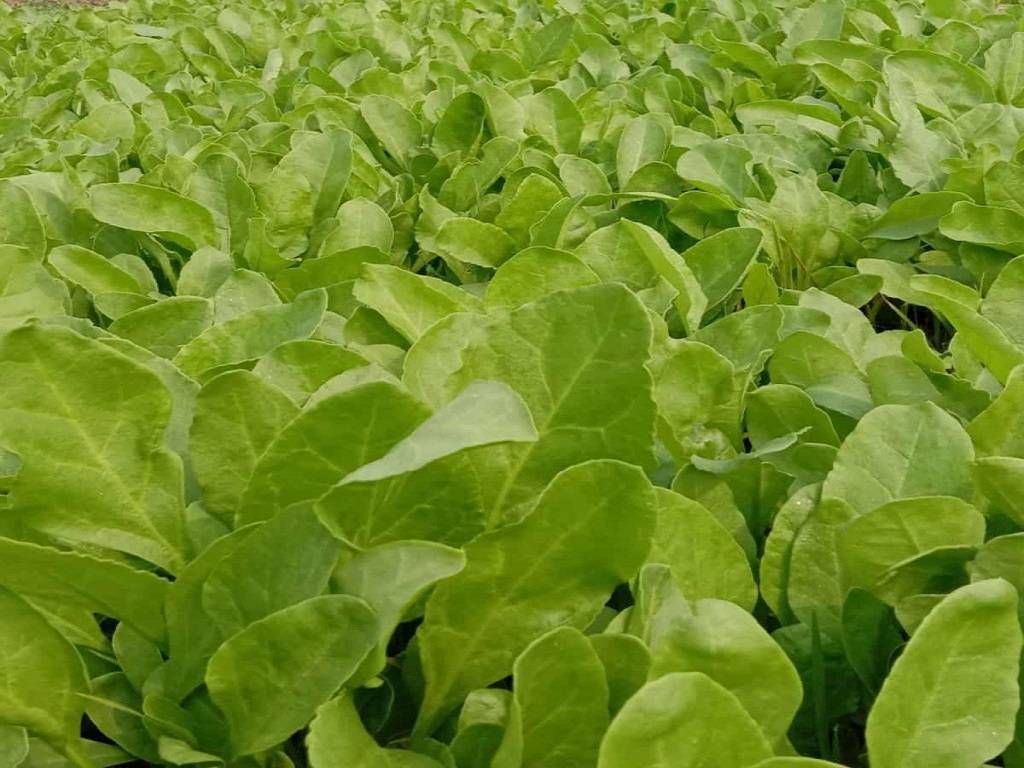
Spinach belongs to the Chenopodiaceae family. Spinacia oleracea is a fleshy-leaved perennial with a dense rosette of wide, crinkly delicate leaves. In 1828, the first savoyed leaf cultivar was imported into North America.
7 Ways to Boost Spinach Growth
Spinach site and soil selection:
Although spinach may grow well in most soil types, it will do best in soil that is rich in organic matter. In general, the pH and soil type of a spinach plant rarely become a limiting factor. But it has been shown that spinach does well in sandy loam soils with a pH of 6,5 to 6,8. A few days before sowing, farmers may use P2O5 at a rate of 50 kg per hectare in situations of severe P deficiency. Remember that every industry has distinct requirements. Before planting, growers should analyze their soil. To create a sensible field preparation strategy, they can also consult a certified agronomic in their area. A few days before sowing, some farmers may additionally plough well and apply well-rotted cow dung to replenish N levels.
Spinach water requirement:
The root system of the spinach plant is quite shallow. As a result, to generate an appropriate yield, the plant prefers smaller and more frequent watering sessions. Farmers should focus on keeping the soil wet during the growing season as a general rule. Farmers with extensive experience argue that keeping the soil continually wet benefits plants in two ways. On the one hand, the plant will be capable of absorbing the required water. This, on the other hand, will keep the soil temperature low, which will result in superior spinach growth.
Spinach planting:
Because spinach requires chilly temperatures, most gardeners begin growing it in early spring or late fall. Six weeks before the final spring frost, many farmers choose to seed spinach. We can sow every 10 days till late April in locations with cold springs (mid-May). When growing spinach in warm areas, we may also sow it in the shade of tall crops like wheat, beans, or maize.
Nutrient management in Spinach growth:
In normal soil, spinach may produce leaves, but it thrives in nutrient-rich soil. A few days before seed germination, many seasoned farmers combine compost with phosphorus fertilizer and apply it to the soil. Farmers may use P2O5 at a rate of 50kg per hectare in situations of severe P deficiency a few days before sowing (ask a licensed agronomist). Do not forget that 1 hectare is 2,47 acres or 10,000 square meters.
Pruning facilitates better growth:
As spinach is an annual plant all you need to follow is a bit of pruning of leaves during its season. Like many other leafy vegetables, it is advised to prune the leaves to get healthier and bushier plants.
Pest and Disease management:
Unfortunately, pests and viruses frequently attack and infect spinach plants. Understanding our local crop enemies is crucial for developing an environmentally responsible strategy to combat them. For appropriate treatment of spinach pests and illnesses, growers may speak with a nearby qualified specialist before taking any action. Controlling pests like aphids, leaf miners, slugs and snails and diseases like mosaic virus and spinach blight should be taken into consideration.
Timely harvest of the spinach crop:
Whether we plant spinach for the fresh market or the processed market will determine when to harvest. The majority of the time, spinach plants for the fresh market are picked 38 to 55 days after sowing in a single cut (the entire plant is killed). On the other hand, spinach leaves intended for the processed market are picked 60 to 80 days after sowing. After the initial harvesting session, both the smooth and savoy plants (but largely the smooth plants) are frequently let to grow and regenerate so that the farmers can harvest a second cut.
Certain points to keep in consideration while growing spinach:
-
Seeding Rate: 40 to 60 lbs (20 to 30 kg) of seeds per hectare.
-
Seeds germination will be better in temperatures 41-68 °F (5 to 20 °C)
-
Spinach seeds require a depth of 0.5 to 1 inch (1 to 2,5 cm) covered lightly with soil.
-
Plant Spacing: Space between rows 7-11 inches (20-30 cm) and space between plants in rows 3-6 inches (7-15 cm)
-
Farmers irrigate the field immediately after seeding spinach.
-
Companion Planting is often used. Farmers can sow other plants between the rows of spinach plants. Cauliflower, onion and celery are mostly used.











